Growing plants in a closet is a great way to cultivate your own garden, no matter how small your living space is. In this detailed guide, we’ll take you through everything you need to know about growing plants in a closet, from choosing the right plants and lighting to maintaining proper humidity and ventilation. With our expert tips and tricks, you’ll be able to create a thriving indoor garden in your very own closet. So, let’s get started!

If you are interested in Growing Plants in a Closet, you can also be interested in indoor hydroponic systems to help you easily start growing plants and grow tomatoes all year round. Our top articles: Our Picks for the 5 Grow Tent Kits, Picks for the 5 Aeroponics Systems, Our Picks for the 5 Hydroponic Bucket Systems with Buyer’s Guides, and Our Picks for the 5 best indoor vertical Garden, and Led Grow Lights for an indoor plant, and The Best Hydroponic Tower for Indoor Garden.

There are several reasons why growing plants in a closet can be a great option for many people:
- Space-saving: Growing plants in a closet is an excellent option for people who live in small apartments or homes with limited outdoor space. You don’t need a big yard or balcony to grow plants indoors. With a closet, you can utilize the space you already have to create a thriving indoor garden. Additionally, if you have children or pets, keeping plants in a closet can be a great way to keep them out of reach and avoid any potential accidents.
- Control over growing conditions: Growing plants in a closet allows you to have complete control over the growing conditions. You can adjust the temperature, humidity, and lighting to create the perfect environment for your plants to thrive. This is especially important for growing plants that require specific conditions to grow, such as herbs or vegetables.
- Protection from pests: When you grow plants outdoors, they are exposed to various pests that can damage or kill your plants. Growing plants indoors in a closet protects them from outdoor pests such as insects, snails, and slugs. This can be especially helpful if you are growing delicate or vulnerable plants.
- Year-round growing: With indoor growing, you can grow plants all year round, regardless of the weather outside. This is especially beneficial if you live in an area with harsh winters or if you want to grow plants that are not native to your area.
- Health benefits: Indoor plants not only add beauty to your home, but they can also improve air quality and reduce stress levels. Plants absorb carbon dioxide and release oxygen, which can improve the air quality in your home. Additionally, studies have shown that being around plants can lower stress levels and improve overall well-being.
Comparison Chart 5 Indoor Grow Closet
Best Choice  | VIVOSUN Hydroponic Grow Tent
| Check Price |
Best Two Plant  | VIVOSUN 2-in-1 Grow Tent
| Check Price |
Best Observation  | MARS HYDRO 2×2 Grow Tent Kit for New Grower
| Check Price |
Best Small  | VIVOSUN Grow Tent Complete System
| Check Price |
Best Value  | IPOW Grow Tent Kit Complete System
| Check Price |
Closet Grow vs Grow Tent vs Grow Room
Closet grow, grow tent, and grow room are all options for indoor gardening, but each has its own advantages and disadvantages. Here’s a closer look at each option:
| Feature | Closet Grow | Grow Tent | Grow Room |
| Size | Small | Small to Large | Large |
| Cost | Affordable | Moderate | Expensive |
| Customization | Limited | High | High |
| Portability | Not very | Portable | Not very |
| Lighting | Can be limited | Customizable | Customizable |
| Ventilation | Limited | Customizable | Customizable |
| Temperature | Limited | Customizable | Customizable |
| Humidity | Limited | Customizable | Customizable |
| Plant Capacity | Limited | Small to Large | Large |
Closet grow
A closet grow is a type of indoor garden that is created within a closet space. This option is ideal for people who have limited space, as it allows you to utilize an existing space in your home. Closet grows are typically smaller, which means you can only grow a limited number of plants.
However, they are generally more affordable than other options since you don’t need to purchase a separate tent or room.
img: Grow tent Schema or Crow Closet Schema
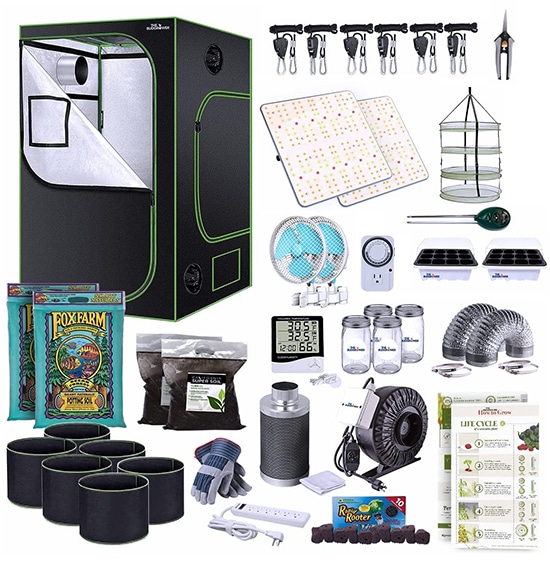 TheBudGrower Complete All-in-One Home Grow Solution 4x4x7ft- 2200W(2)
TheBudGrower Complete All-in-One Home Grow Solution 4x4x7ft- 2200W(2)
- LED lights specialty manufactured by VIVOSUN with Samsung LM301 diodes for FULL spectrum light
- The industries most durable grow tent – heavy duty 1680d oxford cloth
- Money & energy saving complete home grow tent kit
Grow tent
A grow tent is a small, enclosed space that is specifically designed for indoor gardening. These tents typically have a metal frame and a fabric cover that is lined with reflective material to maximize light absorption.
Grow tents are available in different sizes and are often more customizable than closet grows. They are also portable and can be easily moved from one location to another.

Grow room
A grow room is a dedicated indoor space that is used solely for gardening. These rooms are typically larger than grow tents and closet grows and offer more flexibility in terms of the number of plants you can grow and the types of plants you can cultivate.
However, grow rooms are typically more expensive to set up than other options, as they require dedicated space and often require specialized equipment for proper ventilation, lighting, and temperature control.
Grow Closet Installation Planning
It’s important to plan out your installation carefully to ensure that you have everything you need for a successful harvest. Below, we’ll take you through the key considerations when setting up your own grow closet, from selecting the right equipment to planning for water and runoff. With our expert guidance, you’ll be well on your way to creating a thriving indoor garden in no time.
 TheBudGrower Complete All-in-One Home Grow Solution 4x4x7ft- 2200W(2)
TheBudGrower Complete All-in-One Home Grow Solution 4x4x7ft- 2200W(2)
- LED lights specialty manufactured by VIVOSUN with Samsung LM301 diodes for FULL spectrum light
- The industries most durable grow tent – heavy duty 1680d oxford cloth
- Money & energy saving complete home grow tent kit
Grow Equipment and Supplies
When setting up a grow equipment and supplies for your project, you need to make sure that your grow tent is the right size. It should fit correctly in the closet with enough space around it to store other items without taking away from the available room for your plants.
Additionally, consider what type of light to use. LED lighting is a great option due to its lower heat output compared to other technologies, which can be especially useful in a small enclosed area such as a closet.
Aside from lights, ventilation systems are essential to regulate air flow and temperature levels inside the tent; this will help ensure the health of your plants by helping absorb excess humidity and controlling CO2 levels.
Other grow equipment may include trays or buckets for your plants, thermometers, hygrometers, fans, irrigation systems and even fertilizers depending on their needs. Having the right grow equipment and supplies can help increase yields while keeping your project safe from pests and disease.
Water and Runoff
Growers must be mindful about how their plants are getting their water and how to dispose of their runoff. Running lines for water can be difficult, as it requires an accessible water source, tubing suitable for your setup, and the ability to keep nutrient levels stabilized manually.
However, water needs are easily met with a hand pump or multigallon tank within reach. Once the system is set up, removal of runoff can prove difficult without the proper equipment.
Using a shop vac is one of the recommended methods to suck up any runoff in your tent before transferring it outdoors or into the bathroom bathtub or toilet. As this method requires little effort on each individual siphon run, investing in a suitable shop vac is an affordable option that can save time and hassle when it comes to dealing with irrigation remnants.
Further research into effective ways of running your system should be carried out to ensure that you can safely bring your desired greenery indoors without having to worry about leakage.
How Big Closet Do You Need?
When deciding on the size of your grow closet, there are several factors to consider. One of the most important factors is the number of plants you want to grow. The size of your containers and the equipment and supplies you’ll need to install will also play a role in determining the size of your grow closet.
A general rule of thumb is that you’ll need approximately 2-3 square feet of space per plant. This means that a closet that is 3′ x 3′ (9 square feet) could accommodate 3-4 plants. However, keep in mind that this is just a general guideline, and the number of plants you can grow in your closet will ultimately depend on a variety of factors, including the size of your plants and the equipment you’ll be using.
It’s also important to consider the height of your closet when determining the number of plants, you can grow. Some strains can grow quite tall, so you’ll want to ensure that you have enough vertical space to accommodate your plants. Additionally, you’ll need to consider the space required for your equipment and supplies, such as your lighting system, ventilation system, and growing media.
Remember that it’s always better to err on the side of caution and choose a slightly larger closet than you think you’ll need, as this will give you more flexibility in your growing options.

How Many Plants Can You Grow in Your Closet?
A general rule of thumb is that you can grow one to two plants per square foot of space, but this can vary depending on the size of your plants and the equipment you’ll be using. However, keep in mind that crowding your plants can lead to reduced yields and poor plant health, so it’s important to give them enough space to grow.
Another factor to consider is the yield potential of your chosen genetics. Some strains have a higher yield potential than others, which means that you may be able to grow fewer plants and still achieve your desired harvest. Consider the yield potential of your chosen genetics and your personal consumption needs when determining how many plants to grow.
How to Turn Your Closet into A Grow Room?
With the right tools and techniques, it’s possible to transform an ordinary closet into a thriving indoor garden. With our expert guidance, you’ll be able to create a healthy, vibrant indoor garden that will provide you with fresh produce and plants for years to come.
Clear and Free Up Space in Your Closet
Before beginning your closet grow, it is essential to first clean and clear out the closet space that you plan to use. Old clothes, boxes of stuff, or any other items must be removed from the area. This will also help make sure nothing has gone stale in the climate.
For example, if you are using a spare bedroom closet, it’s important to make sure the area was not previously being used for storing old items that could cause harm to plants. We made sure to vacuum the floor of our closet we used in our closet grow journal before starting our grow project. This removes any bacteria that could ruin your growing attempt, as well as keeps allergens at bay.
Once all clutter has been removed from the having been cleared out. This will allow extra breathing room for new pieces of furniture or planting materials you may need for your project. It’s essential to make sure all sides of the closet are ready due to potential pest infestations or damages you may need inspect once everything has been pulled out such as dry-rotted boards and moldy cardboard boxes or anything else that could potentially damage plants within close proximity. Making sure everything reorganized and neat helps ensure success with a strong start!
Set Up a Grow Tent
When selecting a grow tent for your closet, consider the size of your closet and the number of plants you plan to grow. The tent should fit snugly in your closet and provide enough space for your plants to grow. Ensure that your grow tent has proper ventilation and access points for your equipment, such as lights, fans, and carbon filters.
Start setting up your grow tent by laying out all of your equipment and tools in an organized manner so everything is accessible during assembly. Next, begin assembling the poles which act as the base frame for the tent itself. Once these are securely set in place, create four corner pieces with 16 total pegs and then attach four vertical bars that are designed specifically to hold these corner pieces in place.
Then hang each wall panel connecting them into one big piece of fabric to form your complete grow tent enclosure! Make sure all zippers are properly secured and completely closed before planting or adding lights!
Choice of Growing Medium
The choice of growing medium is an important consideration when setting up an indoor garden in your closet. The type of growing medium you choose can affect plant growth, water retention, and nutrient uptake. There are several options available, including soil, coco coir and hydroponic system.
Soil is a traditional and easy-to-use growing medium. It’s readily available, affordable, and provides a stable foundation for your plants. However, soil requires proper drainage and may need to be supplemented with nutrients to ensure optimal plant growth. It’s also important to note that soil can be heavy, which may not be ideal for a closet grow setup.
Coco coir is a popular alternative to soil that is lightweight, pH-neutral, and holds water well. It’s made from the fibrous husks of coconuts and is considered a more sustainable and eco-friendly option than soil. Coco coir provides excellent aeration, which promotes healthy root growth, and it can be reused multiple times before it needs to be replaced.
Hydroponic systems use water and nutrient solutions instead of soil, which can produce fast-growing plants with high yields. Hydroponic systems are ideal for small spaces, as they don’t require soil and can be set up in a closet or other compact areas. However, hydroponic systems can be more complex and require more maintenance than soil or coco coir.
When selecting a growing medium, consider the needs of your plants and your personal preferences. Some plants, such as herbs and leafy greens, may thrive in a simple soil or coco coir setup, while others, such as tomatoes or peppers, may require a hydroponic system to reach their full potential.
Set Up the Ventilation System
Setting up the ventilation system in a closet grow room is essential for supplying your plants with adequate air flow. As such, it’s important to choose the right setup for your space. Hanging both your carbon filter and fan directly inside the tent is ideal, as it will be far more efficient and provide ample circulation without occupying any of the valuable plant growing space.
If you’re using a smaller tent or want to maximize what little space you have, then it might be necessary to position the carbon filter outside of the tent instead. Although this isn’t as efficient, it still works just fine if done correctly.
When positioning your carbon filter outside of the tent, make sure that there is no potential blockage between it and the fan. Otherwise, you may not get an adequate exchange of air. If opting for this route, ensure that all connections are snugly fastened together; you don’t want any gaps where potentially harmful toxins can escape.
Lastly, do regular checks on air circulation to make sure everything is in working order due to external factors like debris or changes in temperature.

Customize Your Grow Light
When you unbox your grow light and prepare for installation, look out for any included instructions or documentation that specify the ideal height above the canopy. This number should not be exceeded, since lights tend to emit large amounts of heat and having them too low can damage delicate foliage or fry them entirely.
Using adjustable light hangers, hang the fixture at the specified distance and make sure they are firmly in place before turning on power. Taking notes on specific locations and heights with each type of light used is important when experimenting with different set-ups. Over time you may need to raise your light as necessary if plants become ‘leggy’ due to reaching toward its source of energy and nutrients.
BONUS: Tips for Growing Plants in a Closet
Growing plants in a closet can be a great way to bring fresh herbs, vegetables, or flowers into your home. However, it’s important to take certain precautions to ensure that your plants are healthy and thriving. Here are some tips for growing plants in a closet:
- Choose the right plants: When selecting plants for your closet, consider the lighting conditions, space limitations, and temperature of your closet. Some plants, such as herbs, leafy greens, and succulents, are well-suited for low-light conditions and small spaces, while others, such as fruiting plants, may require more space and higher light levels.
- Invest in quality grow lights: Lighting is one of the most important factors for plant growth, and investing in quality grow lights can help to promote healthy growth and maximize yields. LED grow lights are a popular option for indoor gardening, as they are energy-efficient and emit little heat.
- Water and fertilize your plants regularly: Plants in a closet may require more frequent watering and fertilization, as the confined space can lead to quicker evaporation and nutrient depletion. Monitor your plants regularly and water and fertilize as needed.
- Pay attention to temperature and humidity: The temperature and humidity of your closet can affect plant growth and health. Use a thermometer and hygrometer to monitor temperature and humidity levels and adjust as needed.
- Prune and train your plants: Regular pruning and training can help to promote healthy growth and prevent overcrowding. Remove any dead or diseased leaves and branches, and train your plants to grow in the desired shape or direction.
Frequently Asked Questions
Can I use a closet for hydroponic gardening?
Yes, hydroponic systems are ideal for small spaces, as they don’t require soil and can be set up in a closet or other compact areas.
Can I grow fruits and vegetables in my closet?
Yes, you can grow a variety of fruits and vegetables in a closet grow setup. Consider the lighting, space, and temperature requirements of the specific plant when selecting what to grow.
How do I prevent mold from growing in my closet grow setup?
Proper ventilation and aeration are key to preventing mold growth in your closet grow setup. Ensure that your closet has proper ventilation and access points for your equipment, such as fans and carbon filters. Monitor the temperature and humidity levels regularly and adjust as needed.
How do I control pests in my closet grow setup?
Pests can be a common issue in indoor gardening. Use organic pest control methods such as neem oil or insecticidal soap to control pests. Monitor your plants regularly and inspect them for any signs of pest infestation.
Do I need to fertilize my plants in a closet grow setup?
Yes, regular fertilization is important to ensure optimal plant growth and yields. Choose a high-quality fertilizer and follow the manufacturer’s instructions for application.
Can I grow plants in a closet without a grow tent?
While a grow tent is recommended for indoor gardening, it’s possible to grow plants in a closet without one. Ensure that your closet has proper ventilation, lighting, and aeration to promote healthy plant growth.
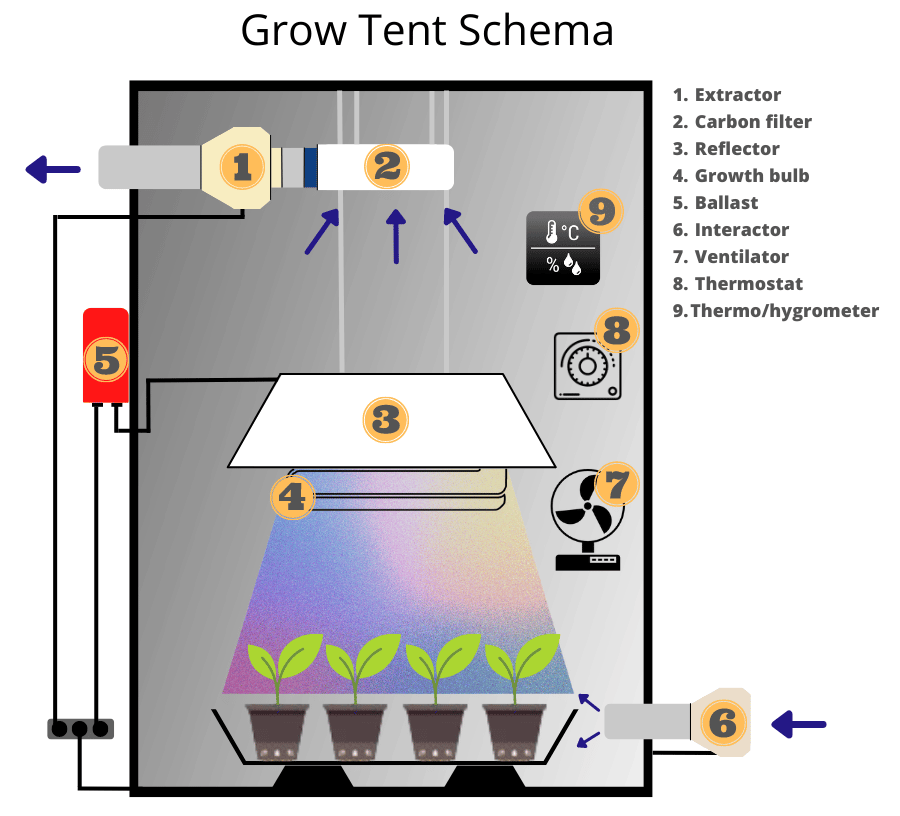
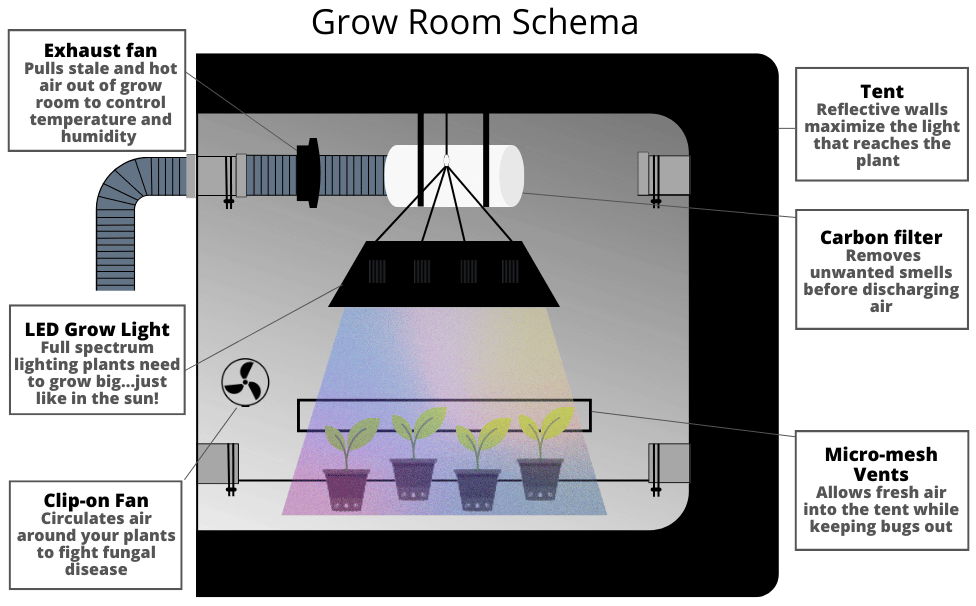

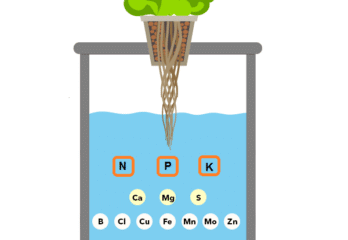
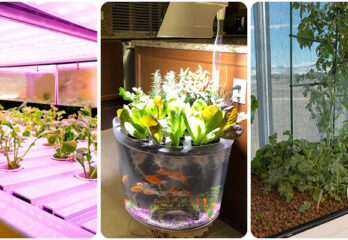
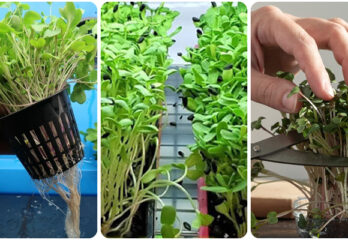
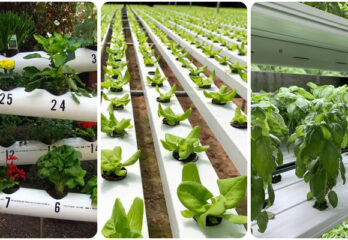
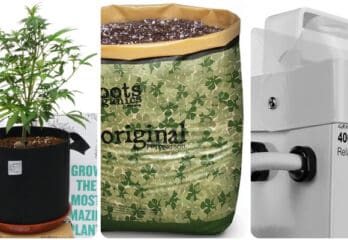
Leave a Reply